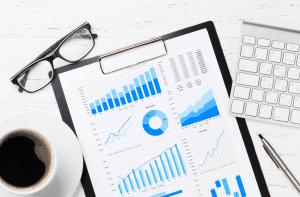Gold has recovered its color on Tuesday after getting a blow on Monday due to the return of risk appetite. After slipping the highest one-year decline of 5 percent in more than seven years on Monday for the Comex Futures contract, Gold gained 1.2 percent to $1,876.4 on Tuesday.
In the expectation of an anti-Covid vaccine, oil prices continued to climb on Tuesday: the December contract for the barrel of U.S. light crude (WTI) took 2.7 percent to $41.36 after an 8.5 percent leap on the Nymex on Monday. After a 7.5 percent jump the day before, the Brent contract for January delivery rose 2.9 percent to $43.61.
In the U.S. government bond market, in the face of a return to risk appetite and hopes of a resumption of growth in 2021, the yield on the 10-year T-Bond continued to rise by 0.95 percent, up 3 basis points on Tuesday, after Monday’s gain of 11 basis points.
According to the dollar index, which tests its evolution against a basket of six currencies (euro, pound sterling, yen, Swiss franc, Canadian dollar, and Swedish krona), the dollar stabilized at 92.80 points with a rise of +0.08 percent, following an increase of 0.7 percent the previous day.
On Tuesday, The Job Openings and Labor Turnover Survey (JOLTS) on job openings in the United States for the month of September on the economic front across the Atlantic were not really shocking. With 6.436 million openings against a consensus hovering at 6.508 million, employment vacancies for the previous month were revised down to 6.352 million.
Meanwhile, several members of the Fed, Eric Rosengren, Randal Quarles and Lael Brainard (who is likely to become the next Secretary of the Treasury), spoke on various economic and monetary issues on Tuesday.
Boston Fed Chairman, Eric Rosengren, said that more steps to help the U.S. economy would probably be needed: “With the second wave of coronavirus going on, my feeling is that further fiscal and monetary easing is needed,” he said, adding that differences about the outcome of the U.S. presidential election and confusion about the makeup of the Senate made it difficult to predict the amount of the economic stimulus plan.







